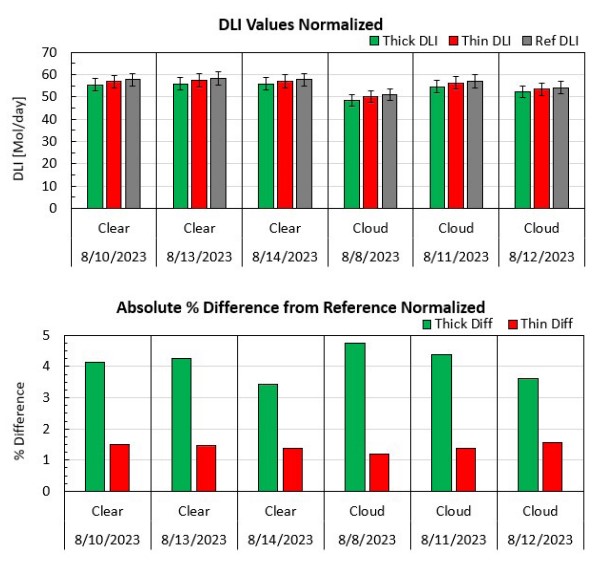Influence of Mounting Cable Thickness on Guardian DLI
Introduction:
The Apogee Instruments Guardian is a multi-sensor monitoring platform designed to be used in controlled environments like greenhouses. One of the sensors of this platform is a photosynthetically active radiation (PAR) sensor mounted on the top of the unit. The Guardian is typically mounted using a trio of hooks and wires that allow it to be hung from a structure like a pole or bar to measure both electric light and natural sunlight in a greenhouse setting.
However, the wires of this mounting setup cast shadows on the PAR sensor as the position of the sun changes relative to the sensor throughout the day, which raised concerns about how this would affect measurements, and potentially the Guardian’s calculated daily light integral (DLI) totals.
During development, alternative cable options that could be easily sourced by 3rd parties were also explored in case customers would be interested in sourcing their own mounting cables. These cables were thicker than the original alternative, which resulted in thicker shadows being cast over the detector relative to the original alternative cables, raising the same concerns for PAR measurements and DLI calculations.
The purpose of this experiment was to assess the influence of the shadows cast by the thinner original wires versus the thicker mounting cables on DLI totals calculated by the Guardian. This experiment was conducted by John Huber, an Apogee technical support specialist.
Set Up:
Two model SM-500 Guardian greenhouse monitoring systems were mounted to a tripod on the rooftop of the Apogee Instruments building in Logan, Utah. The Guardians were mounted on poles that were oriented in a south-facing direction to prevent the mounting equipment from casting shadows onto the Guardians’ PAR sensors. One of the SM-500 Guardians was mounted with 0.75 mm diameter cables, while the other was mounted with 2.00 mm diameter cables for the test. One SQ-500-SS PAR sensor was also mounted to the mast of the same tripod and oriented south to serve as a reference sensor. All three sensors were connected to a Campbell Scientific CR1000X datalogger set to record PAR data from all three sensors at 10 second intervals and to log averaged data every 1 minute. The system was left running on the rooftop for roughly seven days to collect data from both overcast and clear sky days.
After data collection, PAR readings were calibrated to the reference to compensate for minor calibration differences between the SM-500s. Three cloud-free days and three very overcast days were then selected from the entire dataset, and PAR values were converted into DLI totals for each sensor for these days. The DLI totals calculated from the Guardian readings were then compared against the reference sensor readings.

Results:

Normalized DLI values do show a trend related to the thickness of the mounting cables. Both Guardian DLI readings were lower than the reference (gray data), with the thicker cable model (green data) being the lowest of the three. This difference is minimal, however, coming in at less than 5 % overall from the reference, with the thick cable variant DLI totals averaging between 4 and 4.5 % lower and the thin cable variant (red data) DLI totals coming in at 1 to 1.5 % lower.
Conclusion:
This test shows that the thickness of the cable mounts does affect measured DLI totals as measured by the Guardian, but this effect is less than 5 %. Overall, the effect of both the thinner and thicker cable mounts can be considered negligible in greenhouse environments where obstructions from the greenhouse structure are expected to have a much larger effect on measured DLI totals than the mounting cables.

Image 1. Apogee SM-500 Guardian hanging in greenhouse
